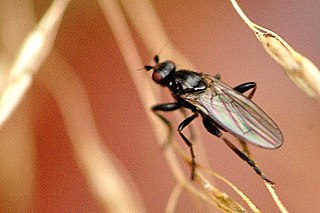
Sphaeroceridae are a family of true flies in the order Diptera, often called small dung flies, lesser dung flies or lesser corpse flies due to their saprophagous habits. They belong to the typical fly suborder Brachycera as can be seen by their short antennae, and more precisely they are members of the section Schizophora. There are over 1,300 species and about 125 genera accepted as valid today, but new taxa are still being described.

The Micropezidae are a moderate-sized family of acalyptrate muscoid flies in the insect order Diptera, comprising about 500 species in about 50 genera and five subfamilies worldwide,. They are most diverse in tropical and subtropical habitats, especially in the Neotropical Region.

The minute black scavenger flies or "dung midges", are a family, Scatopsidae, of nematoceran flies. Despite being distributed throughout the world, they form a small family with only around 250 described species in 27 genera, although many await description and doubtless even more await discovery. These are generally small, sometimes minute, dark flies, generally similar to black flies (Simuliidae), but usually lacking the humped thorax characteristic of that family.
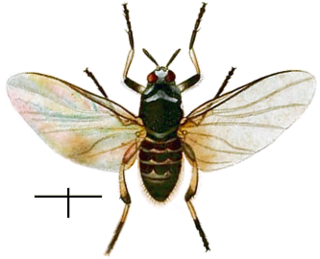
Simulium is a genus of black flies, which may transmit diseases such as onchocerciasis.

Sarcophaga is a genus of true flies and the type genus of the flesh-fly family (Sarcophagidae). The members of this cosmopolitan genus are frequently known as common flesh flies. There are more than 1000 species in Sarcophaga.

The dustywings, Coniopterygidae, are a family of Pterygota of the net-winged insect order (Neuroptera). About 460 living species are known. These tiny insects can usually be determined to genus with a hand lens according to their wing venation, but to distinguish species, examination of the genitals by microscope is usually necessary.
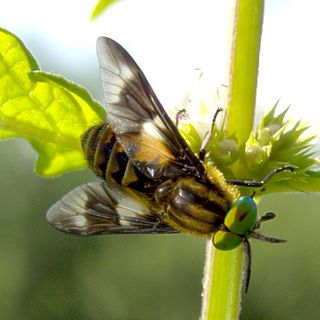
Superfamily Tabanoidea are insects in the order Diptera.

Aleuropteryginae is a subfamily of lacewing.
Spiloconis is a genus of lacewing.
Neoconis is a genus of lacewing.
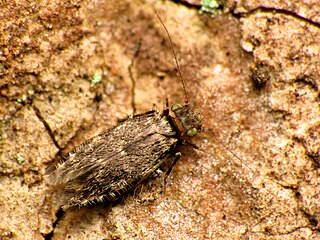
Echmepteryx is a genus of scaly-winged barklice in the family Lepidopsocidae. There are more than 80 described species in Echmepteryx.

Loensia is a genus of common barklice in the family Psocidae. There are more than 30 described species in Loensia.
Stenocaecilius is a genus of lizard barklice in the family Caeciliusidae. There are more than 40 described species in Stenocaecilius.

Mesopsocus is a genus of middle barklice in the family Mesopsocidae. There are more than 60 described species in Mesopsocus.

Metylophorus is a genus of common barklice in the family Psocidae. There are at least 50 described species in Metylophorus.
Elipsocus is a genus of damp barklice in the family Elipsocidae. There are more than 20 described species in Elipsocus.

Heteroconis ornata is a species of Australian lacewing that was first described by Günther Enderlein in 1905. The species is found in Queensland and New South Wales. The species was first recorded in New Zealand in 1988, and by the late 1980s a small colony was found to be established in West Auckland.

Helicoconis is a genus of insects belonging to the family Coniopterygidae.
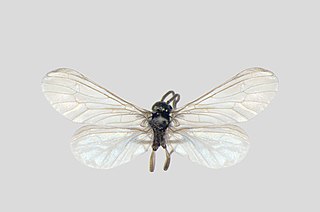
Parasemidalis is a genus of insects belonging to the family Coniopterygidae.

Heteroconis is a genus of lacewings belonging to the family Coniopterygidae.
















